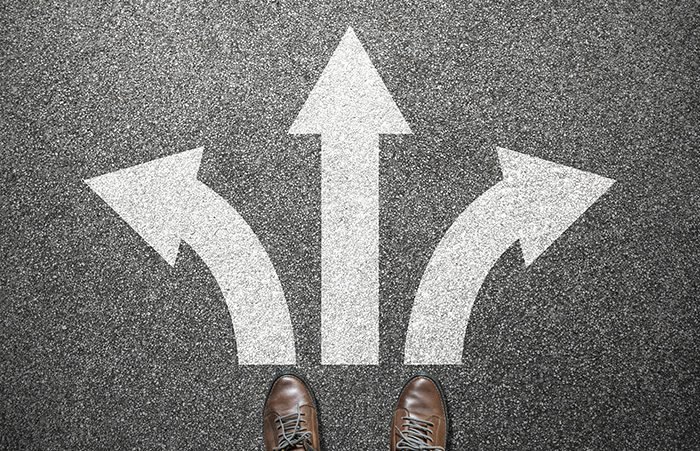Here are 10 ways to move the HR needle for next year.

Remember the Millennium Bug? Y2K? We were obsessed with it. If you weren’t stockpiling water and essentials in your basement, you were wondering if computers were going to stop working at the toll of midnight on Dec. 31, 1999. Programmers and coders frequently used only the final two digits to recognize the four-digit calendar year, so it was anticipated 2000 would be indistinguishable from 1900. It shined a light on a computer programming issue called an “event horizon.” Without corrective action, long-working systems would break down when the “… 97, 98, 99, 00 …” ascending-numbering assumption suddenly became invalid.
Hard to believe that was 20 years ago. When programs reliably rolled over the time to midnight on Jan. 1, 2000, they also struck 12:01, 12:02, 12:03 … . Life went on following Y2K. Very close to “the day after,” we started to think about Workforce 2020 and shifted our attention to that. It’s 20 years later, and here we suddenly are. Are we ready?
Advertisement
An observation I make daily—one that hearkens back to my Minnesota roots playing hockey and the famous Gretzky quote—is that we don’t skate to where the puck will be, we skate to where it is. We make assumptions and plans based on today, hinged to the way it’s always been. It’s challenging to imagine a scenario we may need to accommodate 50 years from now, so we don’t. But we do have to plan for three to five years from now, and our time to do that is now.
So, I challenge you. We have fewer than 50 business days left in this decade, around 70 calendar days altogether. The calendar will flip to 2020, and you will find yourself staring down the same business problems of the last decade. Move the needle in 2020. And use the remaining days of 2019 to plan for it—you know, as if it’s Y2K.
See also: The time to future-proof is now.
So how do you make a dent in the rest of 2019? We get things done if we have a checklist like pilots do, so here is a checklist for you to follow:
- Make sure you have clearly articulated your vision for 2020 and what it means in terms of digital HR. Write it out as if it’s your manifesto. Get buy in from others.
- Exhaust 2019 budget dollars to prepare for execution. What action can you take now to set the table for 2020?
- Look back to understand what you’ve accomplished and, more importantly, what you have learned. Measure the impact on the business, and tell the story. It will help you define the work you will do going forward.
- When you do that, decide with your HR leadership team what you want to be great at versus what it’s OK to just be OK at. Prioritization is key.
- Determine who needs to be involved in workforce-experience design, and their specific role in it. Who plays a role in the development of a shared vision; in the creation of your 2020 plan; in the design of processes; and in the selection, configuration and integration of tools? Let the shared vision trickle down when you tell each stakeholder their role. Be clear.
- Do one thing outside your comfort zone. Nothing changes unless we all do.
- Spend time over the last few days of 2019 watching the world outside of work. It will soon be 2020 outside of work; what year is it inside your organization, and what can you do to close the chasm? Put it on a whiteboard alongside your vision.
- Plan a town-hall meeting to provide employees an opportunity to share their experiences, including moments that mattered, what could be improved upon and ideas for the future. It’s much better than gathering “data” from a formal survey—you’ll get more, and they’ll like sharing. Make it count by making them count.
- Challenge yourself to look even farther out. Your 2020 goals are only short-sighted if they don’t roll up to broader organizational goals another decade from now. What is your company trying to be? How does your workforce need to perform in order to become that? That’s your gut check for everything you choose or don’t choose on your journey to get there.
- We’re gloriously human. Never forget the people at the center of it all, including you. Design for that and you’ll never go wrong.
Workforce 2020 is upon us. A new milestone, a new decade. What is your “event horizon,” when long-working systems will break down without corrective action? Imagine a future where a human and non-human workforce produces business value effortlessly, seamlessly, unobtrusively, in the flow of everyday tasks—technology beautifully designed to make people more powerful and effective than ever before. That’s the role of technology—assisting and empowering humans to do the best work of their lives. And it’s the new role of HR to make that possible.
We’re in the #futureofwork. Let’s call it the #nowofwork—#letsgo #ourtime.
Follow my trusty list of contributors who are helping global enterprises make the most of the rest of 2019. You’ll draw inspiration from the work they’re doing every day. Check out Rachelle Anderson (ultra-creative vice president of business development), Alexandra Zea (talented senior principal consultant), Mike Brennan (Leapgen’s president and chief services officer), Tanya Carpenter (our humble chief revenue officer), Elizabeth Castro (brilliant workforce-experience designer and consultant) and Brad Severson (vice president of client engagement and overall caretaker).


Recent Comments